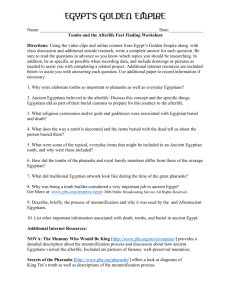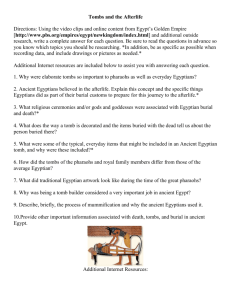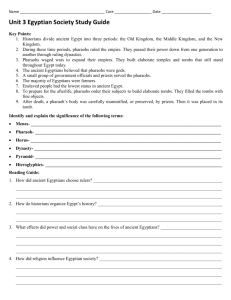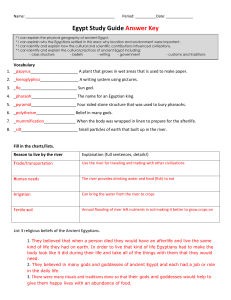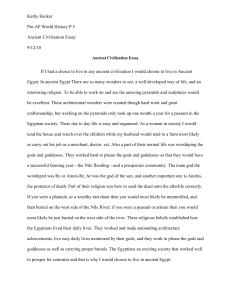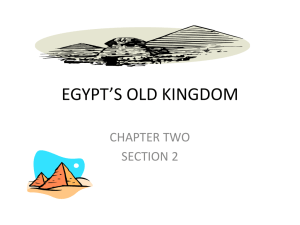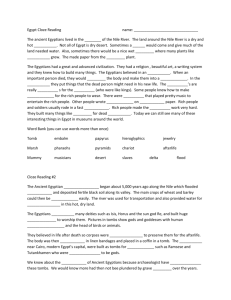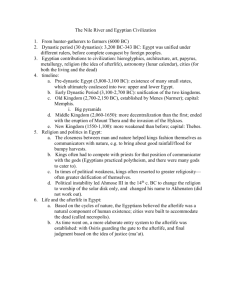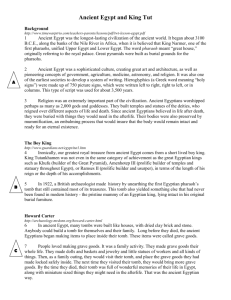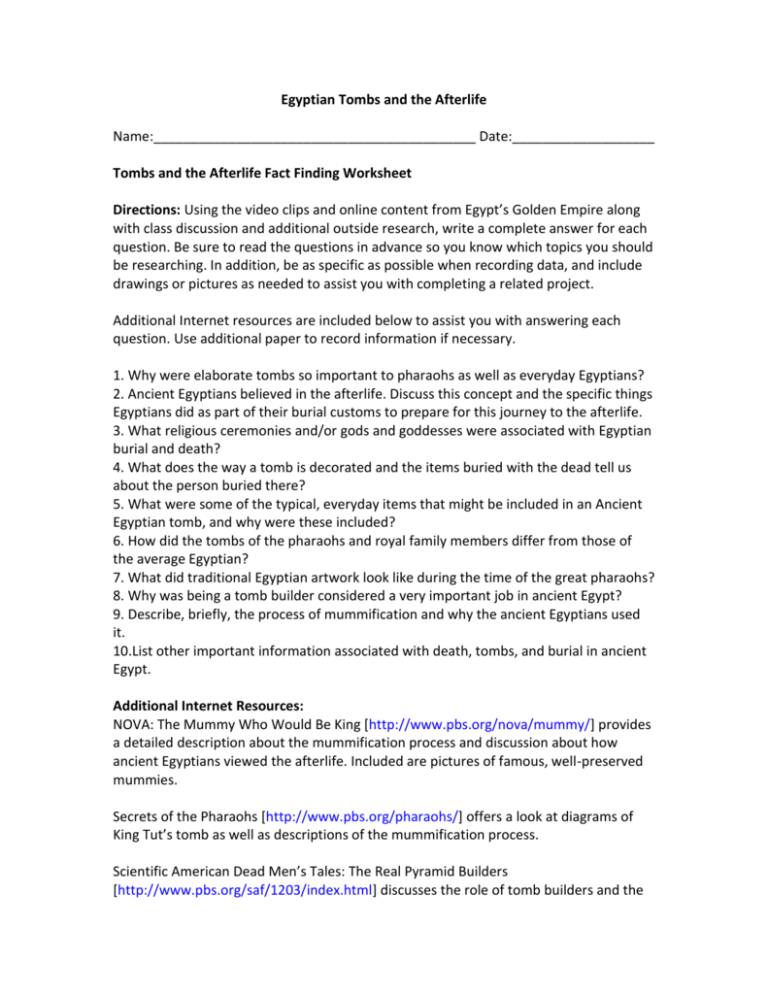
Egyptian Tombs and the Afterlife
Name:___________________________________________ Date:___________________
Tombs and the Afterlife Fact Finding Worksheet
Directions: Using the video clips and online content from Egypt’s Golden Empire along
with class discussion and additional outside research, write a complete answer for each
question. Be sure to read the questions in advance so you know which topics you should
be researching. In addition, be as specific as possible when recording data, and include
drawings or pictures as needed to assist you with completing a related project.
Additional Internet resources are included below to assist you with answering each
question. Use additional paper to record information if necessary.
1. Why were elaborate tombs so important to pharaohs as well as everyday Egyptians?
2. Ancient Egyptians believed in the afterlife. Discuss this concept and the specific things
Egyptians did as part of their burial customs to prepare for this journey to the afterlife.
3. What religious ceremonies and/or gods and goddesses were associated with Egyptian
burial and death?
4. What does the way a tomb is decorated and the items buried with the dead tell us
about the person buried there?
5. What were some of the typical, everyday items that might be included in an Ancient
Egyptian tomb, and why were these included?
6. How did the tombs of the pharaohs and royal family members differ from those of
the average Egyptian?
7. What did traditional Egyptian artwork look like during the time of the great pharaohs?
8. Why was being a tomb builder considered a very important job in ancient Egypt?
9. Describe, briefly, the process of mummification and why the ancient Egyptians used
it.
10.List other important information associated with death, tombs, and burial in ancient
Egypt.
Additional Internet Resources:
NOVA: The Mummy Who Would Be King [http://www.pbs.org/nova/mummy/] provides
a detailed description about the mummification process and discussion about how
ancient Egyptians viewed the afterlife. Included are pictures of famous, well-preserved
mummies.
Secrets of the Pharaohs [http://www.pbs.org/pharaohs/] offers a look at diagrams of
King Tut’s tomb as well as descriptions of the mummification process.
Scientific American Dead Men’s Tales: The Real Pyramid Builders
[http://www.pbs.org/saf/1203/index.html] discusses the role of tomb builders and the
fact that they were craftsmen and not slaves. A discussion of what was contained in the
average worker’s tomb, as well as details about the tomb and how the body was buried
are also included.
Egyptian Afterlife, Coffins, and Mummy Masks
[http://www.crystalinks.com/egyptafterlife.html] includes pictures, drawings, and
explanations on the afterlife and the burial process used in ancient Egypt.
The Ancient Egypt Web pages
[http://members.aol.com/TeacherNet/AncientEgypt.html] supply links to a wide variety
of subjects related to ancient Egypt.
The Goddesses and Gods of Ancient Egypt
[http://www.mnsu.edu/emuseum/prehistory/egypt/religion/godslist.html] provides a
comprehensive list of the gods and goddesses along with an explanation of what they
represented. There is also a pronunciation guide and a physical description of what the
god/goddess looked like.
The British Museum’s Gods and Goddesses
[http://www.ancientegypt.co.uk/gods/explore/main.html] provides a comprehensive
picture and alphabetical list of the most important gods and goddesses. There is also a
physical description of what the god/goddess looked like and what they represented.
afterlife.
Get More at: www.pbs.org/empires/egypt
Service All Rights Reserved
2 2006 Public Broadcasting

